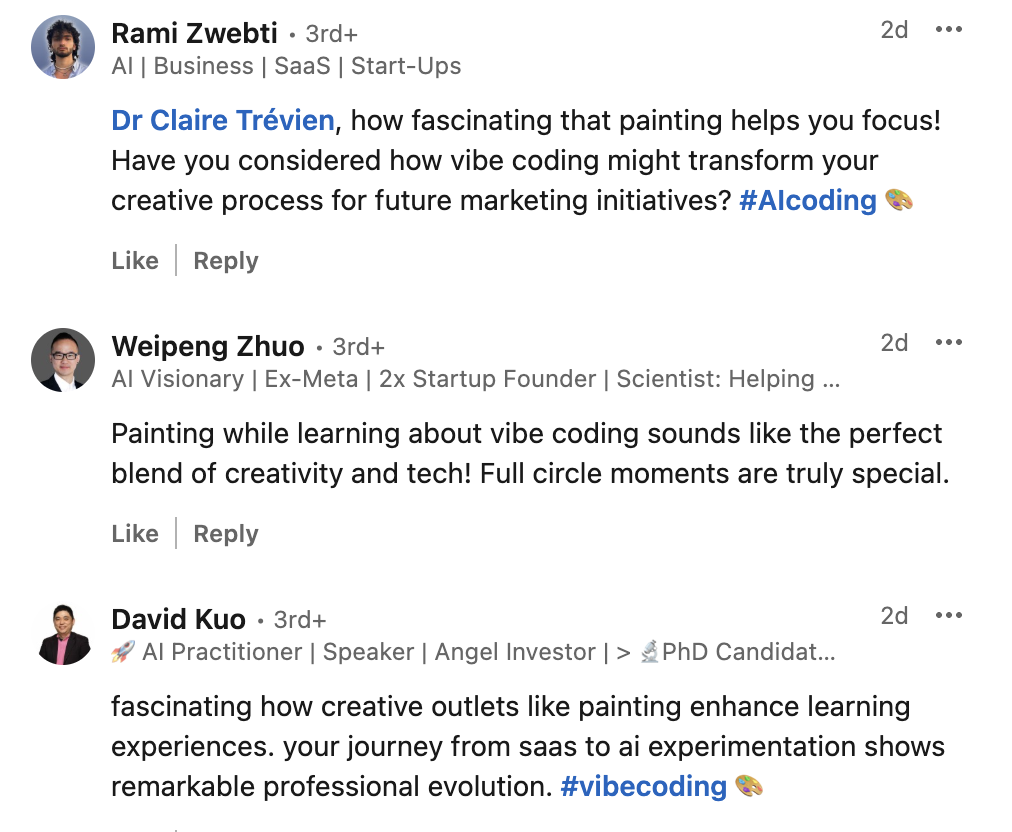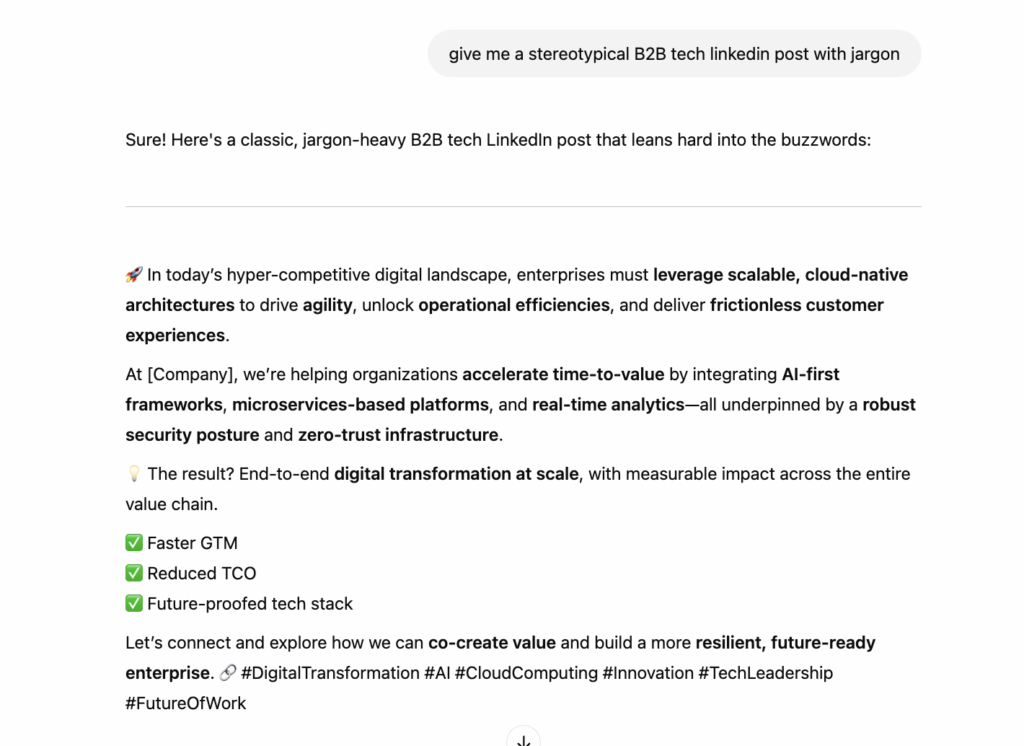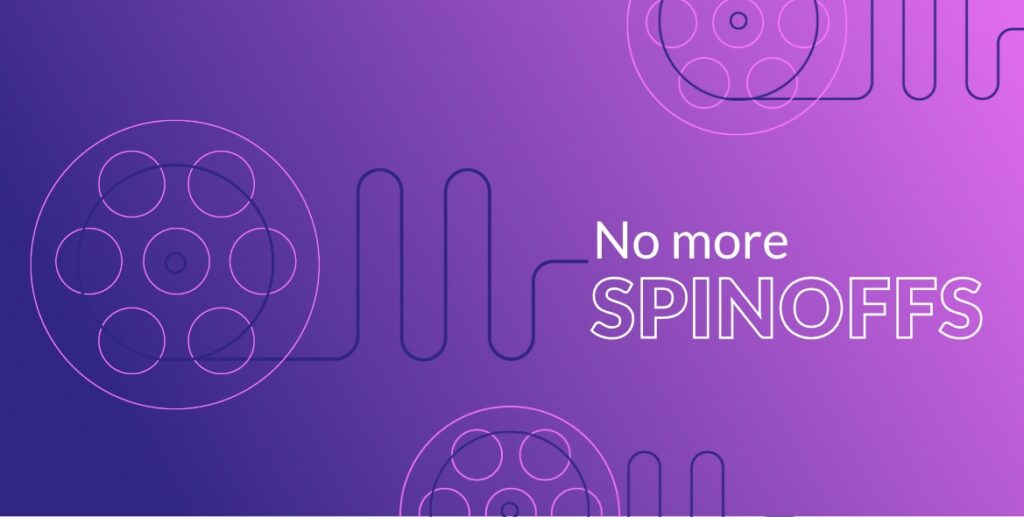From copycat content clogging our feeds to bots replacing basic customer service, AI is reshaping the way we communicate. But in this rush to digitize everything, something important is getting lost: authenticity.
Every time I open my LinkedIn these days, all I see are posts very obviously penned by ChatGPT, followed by comments that are also bot generated.
I recently posted about a vibe coding webinar I attended, and that attracted three bots to comment in the space of a few seconds. They took random words from my post and molded it into a generic word soup. From far away it looks authoritative, but take a closer look and it’s just nonsense.

Social media is meant to be, erm, social, but that aspect is being outsourced to the extent that large portions of these platform are just robots talking at each other. I hope they’re having a great time, but it’s a classic case of “more doesn’t always mean better”.
There are plenty of amazing things that can be achieved with AI but in order to do so:
- Don’t fall for hype masters on LinkedIn: AI can’t buy you the moon or turn it in cheese
- It requires the same thoughtfulness that automation required.
And thirdly, don’t forget the human element. When everyone is focused on going right, zipping to the left is the best way to make an impact.
The pitfalls of AI: unoriginality
Florals for spring? Groundbreaking – Miranda Priestly, The Devil Wears Prada
AI is phenomenal at remixing what already exists. It can churn out endless variations of the same talking points, the same blog posts, the same email sequences. But it struggles to surprise us.
And that’s a problem. Because in marketing, what gets remembered are the things we didn’t see coming.
Yet we’re seeing a wave of LinkedIn posts, blog intros, and outreach emails that all sound… eerily familiar.
Our attention spans haven’t magically lengthened since the dawn of AI, so why should anyone stop scrolling to read another post that starts with “In today’s hyper-competitive digital landscape”?

AI isn’t the problem. Over-reliance on it is.
There needs to be more people to reply “but should we?” next time someone says “just use ChatGPT”.
Beware of the AI hype train
I’m no luddite, I know we can’t make Pandora un-open the box. I’m not making a case for pretending that AI isn’t an option for companies, especially since it presents huge opportunities.
So let’s just go through some of the common phrases I see bandied around:
“I can just replace my whole marketing team with AI”
Good luck with that. Good marketing still needs human insight, creativity, and context. Letting AI loose with no human oversight isn’t going to be a solid strategy when you still need to convert humans to your business.
“AI can replace strategy—it knows more than we do.”
It knows data, not your business goals, customers, the (rapidly evolving!) market landscape and all the nuances of that chat you had with your sales director over coffee. It’s not going to probe below the surface to get your SME to reveal what they really need. It won’t find compromises that keep all your stakeholders happy. Strategic alignment still requires human brains.
“With AI, we don’t need subject matter experts anymore.”
Except when you need to say something accurate, insightful, or original. So… always.
“With agentic AI all of that strategy stuff is possible anyway, and it’s cheap as chips”
You can’t believe everything AI-powered LinkedIn gurus tell you unfortunately. To achieve sophisticated tasks with AI, you’re going to need a budget. To keep it working, you’re going to need a budget. To get it to do what you want it to do you’re going to need a human. And a budget.
AI does lots of amazing things and keeps improving all the time, but it is not a panacea.
When to use AI?
Here are a few use cases (non-exhaustive) where using AI makes a lot of sense:
- Any repetitive task that doesn’t require much brain power: metadata descriptions, blog outlines, content repurposing
- Time saving: use AI to summarize long docs, research, generate transcripts, convert your voice memos into cohesive sentences
- Content variation at scale: generate multiple social media posts, ad copy variations, email subject lines for A/B testing
- Data cleanup and restructuring: format survey results, tidy messy spreadsheets, tag and categorize content
- Meeting productivity: auto-generate summaries, to-do lists, or follow up emails from transcripts or recordings
We’re currently experimenting with vibe coding to develop more sophisticated use cases to share with our clients. AI is not our enemy, instead we’re seeing it as incentive to keep pushing the envelop further. With the baseline taken care of there’s no excuse for dull, repetitive messaging.
The human advantage
What the proliferation of AI interactions means is that anything human-powered feels bespoke and premium by contrast.
If that sounds like qualities you associate with your brand, then you need to:
- Invest in people who know your audience deeply
- Hire a dedicated human community manager to leave thoughtful comments, and monitor micro-trends as they emerge.
- Go back to doing trade-shows. In-person events are the perfect antidote to AI-saturation. No one can fake that handshake (yet).
Want help injecting back personality into your B2B marketing efforts? Message us at hello@isolinecomms.com
Like what you just read?
There’s more where that came from. Sign up to our newsletter to get the latest B2B tech news, content marketing insights, tips, tricks, memes, and more, delivered straight into your inbox every month.



